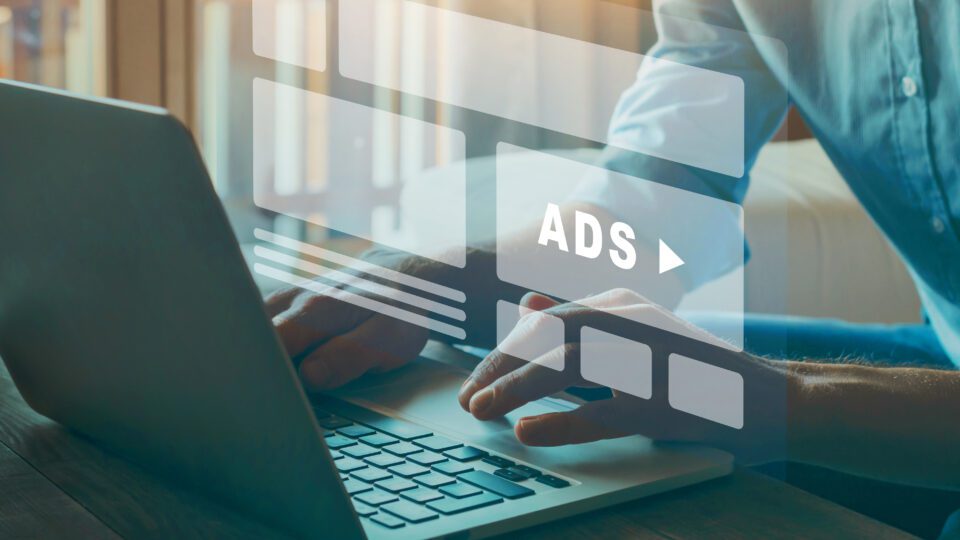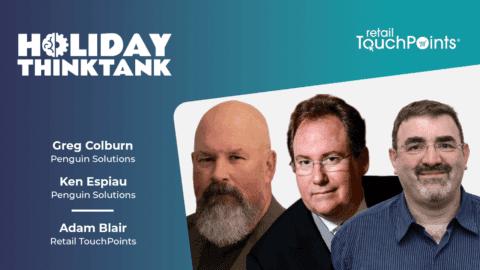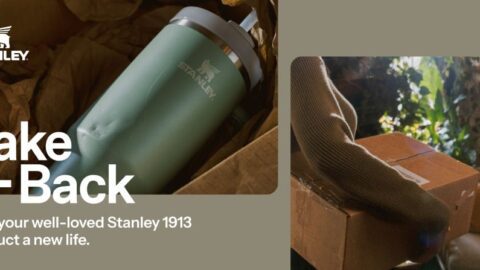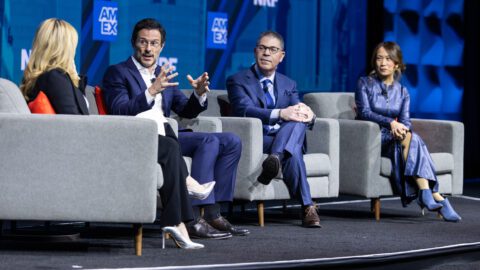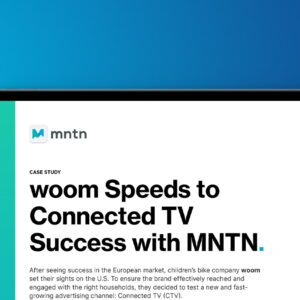Conversations around retail media of late have tended to focus on the “external opportunity” — that is, chances for retailers to make advertising money beyond their own websites on social media, search engines and in stores, for example.

But Andreas Reiffen, Founder and CEO of retail media supply-side platform Crealytics, thinks all this talk of “off-site” opportunities has distracted retailers from the true prize. According to him, the real money in retail media is right where it all started, on the retailer’s website, and to prove it one need look no further than Amazon.
Reiffen sat down with Retail TouchPoints to share his take on why Amazon currently has such an outsized share of today’s retail media market — and how other retailers can change that.
Retail TouchPoints (RTP): Why do you think most retailers are focusing on the wrong things with their retail media offerings?
Andreas Reiffen: If you look at U.S. ecommerce, you’ll see that Amazon has a share of 38%; however, in retail media, they have a share of 78%. They made $29 billion in 2022 in the U.S. only, while all the others — which is Walmart, Target, Lowe’s, Home Depot, Best Buy and so on, the list is long — they all together get to $8 billion, which is a disaster. How is it possible that they all together make a fraction of what Amazon does?
[To understand why] you have to look at what Amazon is doing differently, and if you break it down, there’s not much mystery. While everyone else is talking about closed loop and off-site, about 75% of Amazon’s revenues come from sponsored products. That’s approximately $20 billion — so almost 3X more than all the rest make across all channels, at Amazon is coming just from sponsored products.
Amazon is actually replicating the exact same strategy Google applied [in its early days of advertising]. Google reports the change in cost per click [CPC], as well as the change in number of paid clicks on an annual basis. So we took the last 10 years [of those numbers at] Google, and we realized that in nine out of 10 of those years, the cost per click went down. So every year except for the year of COVID, clicks became less expensive while at the same time their ad revenues exponentially scaled. How is it possible that the [price of clicks] deflates and at the same time they make more money? Because they also have approximately a 900% increase in the number of paid clicks over the last 10 years — somehow they managed to scale up the volume of paid clicks.
They will tell you, ‘Oh yeah, it’s YouTube clicks, etc.’ but that’s not true, it’s happening mostly on search. [When Google first started selling ads] on search, you had a few ads that you could barely see on the right side-rail. At some point they moved them to the top, and then they moved the PLAs [product listing ads] on top as well. Now above the fold, it’s all paid. So they made previously non-paid clicks, paid. There was a massive increase in the supply of paid clicks, which demand can immediately meet — if an advertiser gets twice as many clicks, they will invest more because their return goes up as they pay less. You have this huge impact of volume. In the end, they overall paid more, but not on a per-click basis, simply because the volume went up. So the transformation of formerly free clicks into the paid area attracted more and more budget over time, because the ROI went up if you take advertising in a silo.
Now look at Amazon — they started with a few sponsored products on the side-rail, then a few sponsored products popped up in the middle, and now it’s sponsored products everywhere. Sometimes you have 25% to 30% sponsored products coverage [on an Amazon search results page]. Now on Amazon if you don’t advertise, you no longer show up [in search], so you effectively disappear. Amazon has found a way to force everyone into this advertising game.
RTP: How are you helping other retailers catch up to Amazon in this regard?
Reiffen: The problem the rest of the market has is, at the end of the day they are all still retail businesses, so they need to generate transactions. If the ads they show aren’t as relevant as the organic products they show, the conversion rate drops and that harms business. And if you play this game today with a third party [retail media vendor] that isn’t running high-end personalization and AI, then you end up pushing random products on your website because you have no control. [The solution most retailers are using] is to keep [the amount of advertising space] limited. They want to pocket some money, but they know it’s damaging the user experience, so everyone pushes ads into the same five or six tiles — meanwhile Amazon is full of ads. But this is also the reason why they can’t scale, because of a lack of control and relevancy [in ad placement].
Our solution is to essentially break down these silos. Imagine a search for toothpaste — Crealytics will read the organic results page as it would be delivered [without any ads]. We check, before a customer sees the results, where the products organically rank in personalization lists or in the search grid, and if products have a bid [for an advertising placement], we simply move them up. The baseline is always what the retailer’s website personalization delivers, and if there are bids, we simply lift that product and give advertisers bang for their buck. We don’t decide what is being shown, it’s ultimately the retailer themselves that deliver the user experience, and we simply shuffle the order of the ranking a little bit.
And this is something we can now layer on top of Criteo or CitrusAd or PromoteIQ to help them amplify their [ad] inventory and generate more advertising revenue for the retailer. So with Pacvue or Skai, you bid on products, they go into the Amazon machine, then Amazon does the ad serving themselves. Crealytics just adds this translation layer for other retailers where they can take from whatever demand source they choose, but in the end, they define what goes where, and this allows them to [exponentially increase] the amount of ads because they are no longer harmful to the experience.
RTP: It certainly seems like there’s an opportunity to take some market share away from Amazon, but do you think there’s room for every retailer to have a media offering? At the end of the day there’s only so much money to go around.
Reiffen: In relative terms, Amazon today is making 11% off their ecommerce revenue [in transaction fees and the like], and an additional 11% off that ecommerce revenue with ads. So, if they make $100 in net revenue, they take $11 of that from the retail media side. And since 75% of that 11% is sponsored products, that’s the equivalent of 8% (or $8 if they make a $100 sale) coming from sponsored products. The question is, how realistic is this figure for other retailers and is there any way they could even get close?
The reality is they can probably get pretty far, but only if they also give brands the opportunity to really influence what happens on the website. They need to go very broad and cover more than five or six slots on their site. Many retailers have had this internal fight — they say, “These sponsored products are bad. Look at the numbers, they don’t convert,” because in the old world, these ads came from the outside. Now, though, they can make sponsored products as relevant as all the other products [in search results], so they have the ability to scale this up.
However, if you don’t have the breadth and depth of inventory — for example if you only have three toothpaste brands — there’s no point for those brands to pay money because they are visible in any case. But if you have 10 or 20 pages of toothpaste [it’s a different story]. And this is the main reason why so many retailers have layered on a marketplace over their traditional business. Someone like Home Depot has a ton of opportunity because they already have so many brands in a very specific vertical, but if you take someone like Urban Outfitters, which is a client of ours, it’s a very curated assortment and they will never get as far unless they start layering a marketplace on top, [which they have done].
RTP: So you think marketplaces are an essential piece of the retail media puzzle?
Reiffen: In most cases, if you really want to play [at the level of] Amazon, I think yes, you need to build a marketplace business. The real point here, though, is that the way we approach retail has changed. Before retailers bought products, put them into a warehouse, had a lot of working capital and sold them later on. Now you still run this retail business, but you scale up your inventory through a marketplace where you have third-party sellers competing.
And that’s another key piece here — it’s not really fair to compare retail media [to what is happening on] TikTok or Meta because as a retailer, this changes the pricing model. Previously, you bought a product, put a margin on top of it and sold it. Now you charge twice — you charge with your markup, but you also charge each click in order to rank these products.
Retailers now have two revenue streams. Amazon can run their retail business at little or even negative margin because of the subsidies from the advertising business. It’s actually hard now for other retailers to not play this game. If your main competitor has two revenue streams, you can’t live without it. But the way to do it is by not scaring your users away. You have to seamlessly blend this in, and you can’t do that with some third party pasting products on your website.
RTP: What do you say to retailers who think this whole thing is tarnishing the user experience?
Reiffen: Google, Meta and Amazon all have one thing in common — every single year since they started doing advertising, there were people who predicted their death by ads. But the reality is, it doesn’t happen. Amazon built this ad business, and still they scaled their marketplace business. Nobody likes it, it feels somewhat wrong to see everything as an ad, but in the end, we all keep buying and we still find our stuff.
So many of these other retailers that want to get into the game are now talking about off-site advertising and they’ve given up on the on-site stuff, because of this internal battle where some parties say, ‘Ads are bad, stop it.’ But the reality is if they don’t want to cover more real estate on their websites, they will simply never build a media business. You can’t dream of building a billion-dollar media business if you don’t want to show ads.
RTP: So does this mean you don’t think there’s potential in off-site?
Reiffen: I’m skeptical of this idea of a “display advertising waterfall,” where 20% of a brand’s budget is used for media buying, because now in retail media you get a 40% markup from the retailer on top of that. I get that the retailers want to sell it, but if I was a brand, I wouldn’t want to buy it.
I think there’s just a lot of distraction. If you dissect Amazon’s revenues, you realize that only 5% comes from off-site; 75% is sponsored product. What everybody should do instead of reinventing the wheel is benchmark their numbers and see where they’re off, and then get the basics right. All these [newer players] are talking about branding dollars and video. Sure, you can fight that uphill battle, but you’re trying to crack something that even Amazon hasn’t cracked. Why don’t you simply do the things that have been proven to yield results?
RTP: Are there any other on-site ad formats that you think hold strong potential beyond sponsored products?
Reiffen: Display banners can work if done right, especially on pages where you don’t really have products, like the homepage; it’s navigational by nature so that makes sense. Also, for retailers that run a brick-and-mortar business, everything in-store is something you can definitely monetize. Stores have massive audiences, and they are “unmonetized inventory” so far, to use a term from the digital advertising world. In fact, the store shelf is essentially what sponsored products are. The idea of paying money to be at eye level on the shelf existed way before retail media existed. It’s the same thing [online], except the screen is the shelf.




